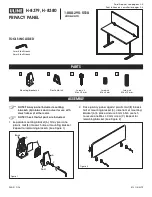
48
Measurement/Planning
Traffic density
Once the supply range has been located and covered, the locations for the base stations are known.
The second phase now looks at other requirements: The traffic volume, determined by the number
of handsets and the frequency and duration of connections in an area defined by the customer. In
most cases such a area does not match the coverage range of a base station.
For each area you now need to determine how many base stations are currently being used to sup-
ply them.
It may be necessary to boost the coverage with additional base stations for insufficiently supplied
areas (in accordance with the customer's requirements). To do so we need to refer back to the base
station locations that were determined for the area coverage. For instance, it is a good idea to place
additional base stations at the centre of an area with a higher traffic volume, even if those units end
up between two already positioned base stations.
To determine the traffic volume, we assume three typical ranges:
"low", "medium", "high". "High" means that approx. 50% of all handsets are making calls simultane-
ously. It is also important to note that the volume of traffic can vary considerably in the course of a
day. The question is always whether or not to cover a traffic volume that may be higher only briefly
in a particular area.
Содержание DECT EMEA
Страница 1: ...Messkoffer Site Survey Kit DECT EMEA Bedienungsanleitung User Guide...
Страница 31: ...29 Anhang...
Страница 34: ...32 Annex 56 Technical data 56 Important information on using batteries 56 Index 58 Table of contents...
Страница 61: ...59 Annex...













































